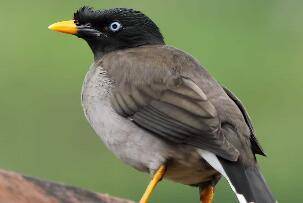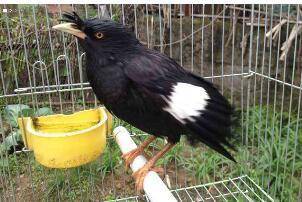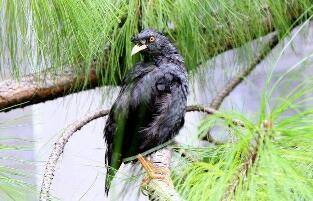Starlings are common in the south of China. They like to form groups and sleep in bamboo forests, big trees or reeds at night. Because they can imitate simple human language, they are widely caged in China and introduced abroad.

The tip of the tongue of myna is the main vocal organ. If the tip of the tongue of myna is too thick, the tip of the tongue is not easy to roll, resulting in difficulty in pronunciation. So before teaching starling to speak, twist its tongue. Twisting the tongue is a very painful thing for starlings. If you love your bird and don’t want to twist the tongue for it, starlings’ speaking time will be delayed; In addition, if the purchased starling is still a young bird, you can talk to it more when it is 3 ~ 4 months old, or put it in the living room so that it can hear more people’s speech.

If you want to teach starlings to speak quickly, you only need to master four steps. These four steps are neither difficult nor simple. First, teaching step by step. At the beginning of training, there is no need to learn overly complex and difficult sentences. To teach step by step, it’s best to start with a simple “hello”. At the same time, if starling speaks well, you can choose to reward it with food such as insects. The pronunciation must be clear, do not spit unclear words, and the tone must be slow, not too hasty. When the first sentence has been consolidated for a week, teach the second sentence. First teach simple two word words, and then teach three word words, four word words, and so on.

Second, consolidate learning. After they learn simple human language, they should train their conditioned reflex. For example, the host says, “come in!”, At the same time, when the door opens, let the Starling say “hello”; When the bird says something, remember to reward the insect, so that it forms a conditioned reflex. Every time you say come in and open the door at the same time, it will say hello. Generally, starlings can learn after 10 ~ 20 days. Third, timing is very important. Starlings in a state of excitement are the best time for their training. Generally, training starlings before feeding every morning is the most effective. In addition, there are sunny days before 10 a.m. and some time before sunset in the evening. These time starlings are more active and easy to train. Fourth, often review. The same reason is the same with people. If you only care about teaching and review, you will always lose the watermelon and pick up the sesame, and the monkey will always go down the mountain empty handed. What’s more, birds have less memory than people, so we must review more.

